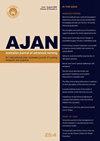Identifying barriers and facilitators of full service nurse-led early medication abortion provision: qualitative findings from a Delphi study
IF 1.3
4区 医学
Q3 NURSING
引用次数: 2
Abstract
Objective: To explore factors that can influence implementation of a nurse-led model of care for early medication abortion provision in the primary healthcare setting of regional and rural Victoria, Australia. Background: Global research indicates that an increased involvement of primary healthcare nurses in the delivery of early medication abortion provision has the potential to improve abortion access. In Victoria, access in regional and rural areas is restricted despite abortion being legal. A nurse-led early medication abortion provision model is feasible and can potentially improve the current situation. Study design and methods: An online threeround classic Delphi method was used. This paper reports the qualitative findings. Non-probability sampling techniques were used to recruit a panel of professional experts. Data from the three questionnaires were collected and analysed using thematic analysis. Factors influencing model implementation were categorised into the Capability, Opportunity, Motivation-Behaviour framework. Results: A total of 24 medical and other health professionals participated. They identified a range of factors that can hinder model implementation, including a lack of affordable medication abortion education, no remuneration for nurse-led early medication abortion provision, and concerns related to stigma and support. Discussion and conclusion: Understanding and addressing barriers to model implementation may enable the development of primary healthcare nurses’ role in the delivery of early medication abortion provision to improve abortion access. Impact: To improve abortion access in Victoria’s under-served regions, the potential of nurse-led early medication abortion provision was explored. Barriers to model implementation relate to a lack of medication abortion education and funding, professional support and stigma concerns. The study identified a range of support elements that would enable primary healthcare nurses to develop new roles and responsibilities in the delivery of medication abortion services. What is already known about the topic? Evidence indicates that appropriately trained primary healthcare nurses can provide early medication abortion and associated tasks as effectively, safely and satisfactorily as physicians. Nurse-led early medication abortion provision is a worldwide recognised strategy to overcome the shortage of early medication abortion providers and to improve equity in access to abortion services. The legal climate of Victoria allows qualified registered nurses to independently administer physician-prescribed early medication abortion drugs to women. What this paper adds: The Delphi panellists of this study all endorsed nurse-led early medication abortion provision in regional and rural Victoria and beyond. The study provides a range of model implementation barriers, which are categorised into the components of the Capability, Opportunity, and Motivation Model of Behaviour. Those barriers need to be challenged and addressed to improve abortion access in underserved regions.确定全面服务护士主导的早期药物流产提供的障碍和促进因素:德尔菲研究的定性结果
目的:探讨在澳大利亚维多利亚州地区和农村的初级保健环境中,影响护士主导的早期药物流产护理模式实施的因素。背景:全球研究表明,初级保健护士更多地参与早期药物流产的提供,有可能改善堕胎的机会。在维多利亚州,尽管堕胎是合法的,但在地区和农村地区的堕胎机会受到限制。护士主导的早期药物流产提供模式是可行的,有可能改善目前的情况。研究设计和方法:采用在线三轮经典德尔菲方法。本文报告了定性研究结果。采用非概率抽样技术招募了一个专业专家小组。对三份问卷的数据进行了收集和专题分析。影响模型实施的因素分为能力、机会、动机-行为框架。结果:共有24名医疗和其他卫生专业人员参加。他们确定了一系列可能阻碍模式实施的因素,包括缺乏负担得起的药物流产教育,护士领导的早期药物流产服务没有报酬,以及与耻辱和支持有关的担忧。讨论和结论:了解和解决实施模式的障碍可能有助于初级保健护士在提供早期药物流产服务方面发挥作用,以改善堕胎机会。影响:为了改善维多利亚州服务不足地区的堕胎机会,探索了护士主导的早期药物流产的潜力。实施模式的障碍涉及缺乏药物流产教育和资金、专业支持和耻辱问题。该研究确定了一系列支持要素,使初级保健护士能够在提供药物流产服务方面发挥新的作用和责任。关于这个话题已经知道了什么?有证据表明,经过适当培训的初级保健护士可以像医生一样有效、安全和令人满意地提供早期药物流产和相关任务。护士主导的早期药物流产是一项世界公认的战略,旨在克服早期药物流产提供者的短缺,提高获得堕胎服务的公平性。维多利亚州的法律环境允许合格的注册护士独立给女性服用医生开具的早期药物流产药物。这篇论文补充道:这项研究的德尔菲小组成员都支持在维多利亚地区和农村及其他地区由护士主导的早期药物流产。该研究提供了一系列模型实施障碍,这些障碍被分类为行为的能力、机会和动机模型的组成部分。需要挑战和解决这些障碍,以改善服务不足地区的堕胎机会。
本文章由计算机程序翻译,如有差异,请以英文原文为准。
求助全文
约1分钟内获得全文
求助全文
来源期刊
CiteScore
2.30
自引率
7.10%
发文量
27
审稿时长
>12 weeks
期刊介绍:
The Australian Journal of Advanced Nursing publishes a wide variety of original research, review articles, practice guidelines, and commentary relevant to nursing and midwifery practice, health- maternity- and aged- care delivery, public health, healthcare policy and funding, nursing and midwifery education, regulation, management, economics, ethics, and research methodology. Further, the journal publishes personal narratives that convey the art and spirit of nursing and midwifery.
As the official peer-reviewed journal of the ANMF, AJAN is dedicated to publishing and showcasing scholarly material of principal relevance to national nursing and midwifery professional, clinical, research, education, management, and policy audiences. Beyond AJAN’s primarily national focus, manuscripts with regional and international scope are also welcome where their contribution to knowledge and debate on key issues for nursing, midwifery, and healthcare more broadly are significant.

 求助内容:
求助内容: 应助结果提醒方式:
应助结果提醒方式:


